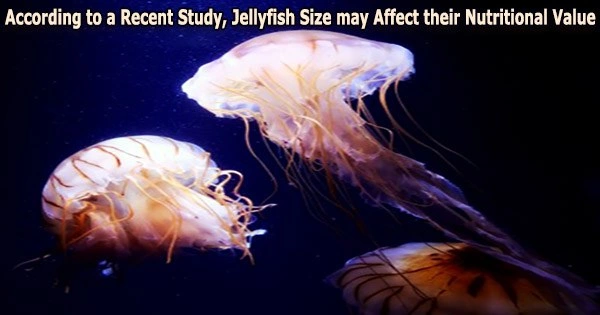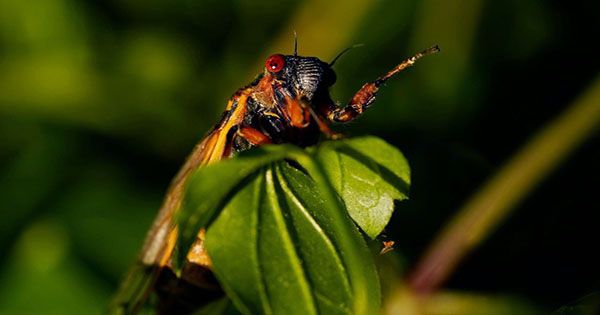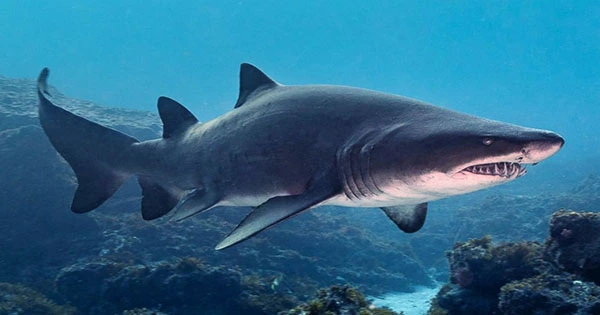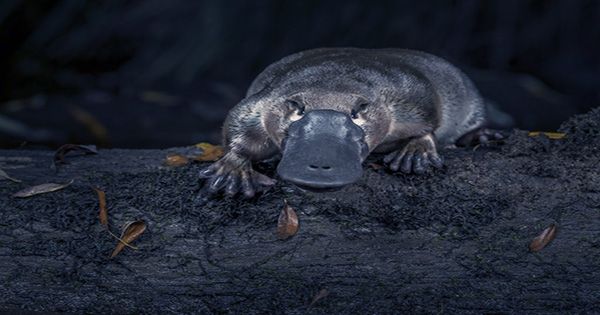Jellyfish are aquatic creatures that belong to the phylum Cnidaria. They are found in oceans, seas, and some freshwater bodies all over the world. Jellyfish are known for their bell-shaped bodies and trailing tentacles that contain stinging cells called nematocysts, which they use to capture prey.
Drifting along in ocean currents, jellyfish can be both predator and prey. They consume nearly anything they can catch and adhere to the standard oceanic principle of “large eats small.” According to a recent study by the University of British Columbia on these gelatinous globs, jellyfish may become more nutrient-dense as they grow larger. The work is published in Ecosphere.
The likelihood of encountering prey, the size and number of tentacles, and the bells all affect jellyfish’s size as they develop (the umbrella-like part of them). As a result, although larger jellyfish can consume all of these things along with shrimp and even fish, smaller jellyfish only consume phytoplankton, microzooplankton, and eggs.
However, jellyfish are also largely preyed upon by animals in and out of the water. Due to their high water content, jellyfish are significant prey because they are simple to catch and quick to eat.
Jellyfish play an important role in marine ecosystems as both predators and prey. They are also used in scientific research and have been studied for their potential medical applications, such as in the treatment of certain types of cancer.
Our recommendation for future studies on jellyfish predators is to consider size more thoroughly. Feeding on a young, small jellyfish is different than feeding on a larger and older jellyfish.
Jessica Schaub
“Our study looked more closely to see if there was any information we could draw about nutrition in jellyfish,” said Jessica Schaub, lead author and a UBC Ph.D. student at the Institute for the Oceans and Fisheries and the Department of Earth, Oceans and Atmospheric Sciences.
“This information helps us understand the true value of jellyfish as food. We looked at how the energy that moves through a food web might look as it moves through jellyfish. What they eat, what they are composed of, and how this might affect what eats them.”
In Heriot Bay, B.C., for example, the moon jelly may often find themselves being eaten by other jellyfish, fish and other invertebrates.
Schaub and her team, which includes associate professor Dr. Brian Hunt, who heads the Pelagic Ecosystem Lab at the Institute for the Oceans and Fisheries, took a look at how jellyfish size, diet and nutritional quality all mesh together. A jellyfish’s nutritional composition can alter in response to dietary and physiological changes in an individual. Nutritional quality can reflect an organism’s life history.
The scientists measured the size of 150 moon jellyfish that were collected over two one-day periods in July and September of 2019. They measured the jellyfish for particular compositional components after drying them.
Schaub explained, “First, we confirmed what was already known: Jellyfish eat bigger prey as they grow, which means they also occupy a higher position in the food web as they grow,” she said.
“We also found that some of the concentrations of ‘healthy fats’ increase as jellyfish grow. We found some evidence that these changes might be influenced by their diet, and as they feed on bigger prey with higher levels of fatty acids, the jellyfish accumulate more of these fatty acids. This means bigger jellyfish might be considered more nutritious.”
The study discovered size trends that highlight how crucial it is to take jellyfish size into account when discussing marine food webs. Including these organisms will improve their representation in food web models and may also contribute to other research.
Looking towards the future, Schaub described what could come next: “Our recommendation for future studies on jellyfish predators is to consider size more thoroughly. Feeding on a young, small jellyfish is different than feeding on a larger and older jellyfish.”
















